At Death's Door, Part 1
Welcome to the first week of Theros Beyond Death previews. Today, I'm going to introduce the set's Vision Design team, start walking you through the set's design, and show off a cool new preview card (of a popular character from our last visit to Theros). Hopefully, that sounds fun.
Meet the Team!
Ethan Fleischer (lead)
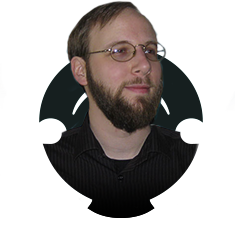
This was Ethan's first time as the lead of a Vision Design team, although he'd led many previous design teams under the old system, including Journey into Nyx, one of the original Theros sets. I led all the initial Vision Design teams as we were finding our feet with the new design process, but Ethan was my first choice for someone else to lead a vision design. Ethan had been on the design team for all three sets of the original Theros block and was well versed in Greek mythology. I even had him do a research project for the original Theros design (you can read about it here). We obviously learned a lot from the original block, and Ethan did a great job capturing the best parts of the original visit while adding in some new elements for our return. (I'll be discussing this when I get to the design-story portion of today's column.)
Ken Nagle

Ken had been on the Theros design team and had led the Born of the Gods design team. It's nice to get designers who are familiar with the world when you do a return, so I was glad to have Ken on the team. Ken's been working very hard on numerous non-Magic products (the Transformers TCG being the thing sucking up most of his time), so it was nice to work with him on Magic again.
Paul Cheon
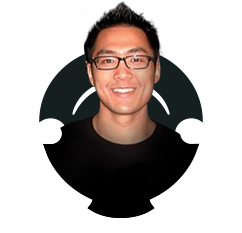
Paul was our initial play designer on the team. It's important to have a play designer in Vision Design because you want to make sure that your mechanics can be balanced down the road. Having someone from downstream in the process can help ensure that what you're making can be properly fine-tuned later. For those unfamiliar with Paul, he's a well-known former pro player who now does commentary for the Mythic Championships. He was brought into R&D on the Play Design team. Paul has since moved over to the esports team as that's where his passion lies. I believe this was my first time working with Paul on a design team. I very much appreciated having his perspective.
Donald Smith, Jr.
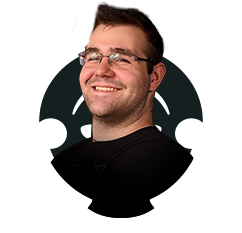
Partway through, we had to swap out Paul for Donald as the play designer on the team. This was also my first time working with Donald. Donald, like Paul, is a former pro player that was brought onto the Play Design team to help do the final design work on sets (and note that goes far beyond just balancing the cards). One of my favorite things about working with Donald is that he's played Magic far shorter than most of R&D (which makes his ability to grok new Magic concepts so quickly extra impressive), so often when we bring up old Magic cards or mechanics we get to watch Donald experience them for the first time. Donald is full of enthusiasm and great insight, so it's always a treat watching him experience things that most of us experienced years ago. Donald's instincts are so good—and tend to come from a different perspective—that he always brings a lot to any design discussion.
Sam Stoddard
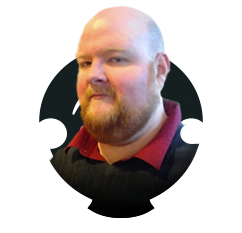
We like to have the set design lead at handoff be on the Vision Design team if possible. This allows them to get a good understanding of what the Vision Design team is up to and gives them the ability to provide input that ensures the set design gets to a good place. Sam has led the development/set design for many sets—Magic Origins, Eldritch Moon, Ixalan (co-lead), and Ravnica Allegiance. I enjoy how much Sam likes to get into the nitty-gritty of how the components are working, always looking ahead to how everything will fit together.
Mark Rosewater
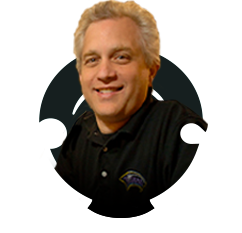
As the head designer, I like to be on all the Vision Design teams. Part of my job is keeping up on all the sets, and I find it easiest to do that when I'm in the middle of working on them. It was nice to sit back and let someone else take the reins.
It's All Greek to Me
I think the first time a Greek mythology–inspired set came up was way back when I started working at Wizards in the mid-'90s. We dismissed it at the time because so much of original Magic was based on Greek mythology that we didn't think it would stand out enough. Interestingly, the green light to finally make a Greek mythology–inspired set didn't come from us choosing to do it as much as it being a fallback when another plan didn't work out. Let me explain.
I came up with a very bold idea for a Magic block. The first set was going to be a prehistoric set filled with dinosaurs (remember, this was years before Ixalan), other prehistoric animals, and some very early version of humans (yes, I know that isn't what actually happened on Earth, but we get to invent our fantasy worlds). The second set would then jump thousands of years into the future, and we'd see humans now living in civilizations, using tools. We'd see many of the creatures we saw in the first set but now evolved. The third set would jump another couple-thousand years in the future, and we'd get to a modern world (by Magic standards) where we could see the same creatures evolved yet again.
The idea had been okayed in the seven-year plan, but as we got close to actually doing it, the Creative team said they didn't have the resources as it was essentially a year with three distinct, even if connected, worlds. We've since grown the Creative team to be able to do that volume of worldbuilding, but at the time, it simply wasn't viable. Brady Dommermuth, the lead of the Creative team back then, pitched a Greek mythology–inspired world with an enchantment theme as both had been things we'd talked about doing off and on for years. He wasn't quite sure how to make the two fit together but had faith that I could figure it out. What resulted was Theros.
You can go read my original articles about Theros design here ("A Theros by Any Other Name" part 1, part 2, and part 3), but here's the quick recap:
After doing some research, I landed on a structure I called "Gods, Heroes, and Monsters." There were three components to the set's design, and each played into an area of Greek mythology. In each case, I leaned into a theme of achievement. Despite your path, the gameplay would encourage you to grow in power over time, ramping up bigger and more powerful creatures and effects. Let me walk you through each section
Gods
I ended up choosing to make the enchantment theme part of the gods, representing their influence and creations. This meant that for the first time (well, outside a futureshifted card from Future Sight) we introduced enchantment creatures to the game. The set also had a new mechanic called bestow. Cards with bestow could be cast as either an aura or an enchantment creature. We also had another mechanic called devotion (which I'll get into a lot more next week) that represented the strong feelings the people had for their gods. When focusing on this aspect of the set, you could either grow through casting auras on your creatures or by building up your permanents to allow your devotion to get larger and enable bigger and more powerful creatures and effects.
Heroes
The heroes represented the civilized denizens on the world. The heroes had a mechanic called heroic that helped generate effects as you targeted your creatures. One of the ways to do this was by casting auras so you could build up your heroes over time through enchanting them. Some of the heroic creatures also built up themselves with +1/+1 counters, so there was also a strategy where you built up your creatures through continual targeting.
Monsters
What would a Greek mythology–inspired world be without a rich menagerie of monsters? The monsters got their own mechanic called monstrosity where once a game you could use mana to upgrade them into a larger, deadlier version.
Theros was well received, and we told ourselves that we would one day return. The story, involving the Planeswalker Elspeth, would likewise leave on a bit of a cliffhanger as Elspeth was sent on a quest by the god Heliod and, once she completed the task, was killed by him. Theros has an underworld, however, so although Elspeth died, she wasn't truly gone, just trapped in the underworld. Another reason we knew we had to return was that we'd left the Elspeth story hanging. What was going to happen to her?
That all brings us up to the start of Theros Beyond Death design.
Down Under
The key to a good return is that you want to capture as much of the spirit of what made the original set or block work while still giving yourself enough room to try something new. Magic is, after all, an ongoing, ever-evolving game, so we want the return to be a mix of nostalgia for what was and excitement for what could be. Each revisit is a chance to build on our worlds and further expand what they are. Today, I'm going to talk about what new element we added, and then next week, I'll dig deep into what we decided to bring back.
Sometimes we spend a lot of time figuring out what the new aspect is of a return, and sometimes it's handed to us on a silver platter. In this case, we purposefully set ourselves up for the return with the work we did in the original Theros block. We made a conscious choice not to show the underworld (okay, we hinted at it a little), so that we could focus on it in our return. I should note that this set isn't only set in the underworld. It's just one component. We're still going to show a lot of above-ground Theros to let you all revisit many aspects you enjoyed from the first visit.
The big question for the Vision Design team wasn't what we would focus on—the new element was going to be the underworld—but rather how we were going to represent it mechanically. We tried a bunch of things, but one thing stood out, a mechanic we referred to as stygian (a word meaning "referring to the river Styx"—aka the river of the dead that one had to cross to get into the underworld.)
Here's how stygian worked. When you played a card with the stygian mechanic, it would bring onto the battlefield a special card from outside the game that represented the river of the dead. One side of the river was the living. That's where the current creatures on the battlefield would now be. The other side was the side of the dead. Creatures on the living side could only block creatures also on the living side while creatures on the dead side could only block creatures on the dead side. The Magic card this resembles closest is the Limited Edition (Alpha) card Raging River.
The mechanic went through a lot of changes. In one version, creatures could tap to swap sides. In another, creatures would choose what side they were on when they entered the battlefield. Another version allowed only the creatures with stygian to change sides. Another version had creatures die from the living side to the dead side. We knew we hadn't quite figured out all the details as the mechanic had numerous ways it could be adapted, but we were excited by it. It was bold and different and created a distinctive play style. This is the mechanic Vision Design handed off to Set Design.
It ended up having numerous issues. As Play Design dug into it, it wasn't as robust for balancing as we'd hoped. The digital teams stressed that this was a giant ask for them. (One they were willing to do, but it's their job to explain to us how easy or hard a particular design will be to translate to digital.) Set Design learned that it was creating bad play incentives. The Creative team was worried that it wasn't exactly matching how the underworld worked. Crossing between the land of the living and the land of the dead was supposed to be a major task, not something that happens constantly in gameplay. Also, living things mostly shouldn't be on the dead side and dead things on the living side. All in all, everyone loved the boldness of the mechanic, but it just wasn't working out.
This meant Set Design would need to find a new underworld mechanic. Instead of just repeating the exercise that Exploratory Design and Vision Design had done, they decided to ask a different question. How was the underworld reflected in the story we were telling? Well, the thrust of the story was about Elspeth's escape from the underworld. What if the focus wasn't so much about the underworld as it was about trying to escape from it.
Okay, what would that mean? Well, the low-hanging fruit for the underworld is the graveyard. When creatures die on Theros, they go to the underworld. When creatures die in the game, they go to the graveyard. If you assume the graveyard is the underworld, escaping from the underworld would be escaping from the graveyard. The Set Design team realized they were onto something interesting.
This led to the next obvious question. What does it mean to escape from the underworld? If you just focused on permanents, it could mean you get them from the graveyard to the battlefield. Or if you wanted to focus on any card, it could mean getting it from the graveyard to your hand or possibly the top of your library. Straight to the battlefield felt more flavorful and splashy, but it was definitely a more powerful effect (making it harder to balance), and it left out the nonpermanents.
This led to the idea of letting you cast cards from the graveyard. This way, permanents could get to the battlefield and spells could get to the stack. What kind of cost would you need? The team started with just mana, but that caused several issues. One, the spells were basically just flashback, and two, there was a repetition-of-play issue. The mechanic could exile spells as you cast them out of the graveyard (although that completely made them flashback), but it would be much harder to do that with permanents. You could say they exile when they left the battlefield, but as that could happen many turns later, it created a huge memory issue. If the spells and permanents just returned to the graveyard, why couldn't you just cast them again and again?
This led the Set Design team to realize that they needed some other resource, one that was limited in its supply. When they stopped to think about it, the solution was easy. Escape, as the mechanic would be called, was turning the graveyard into the underworld. Why not use the graveyard itself as the resource? Exiling cards from the graveyard would be flavorful and would do a great job of limiting how often you could reuse a card. It also would make the spells different from flashback in that you could recast them multiple times.
The team tried a version where the only cost was exiling cards, but that ended up not having the knobs needed to balance the mechanic, so mana was added to the card exiling. The team then found that they could apply this mechanic to any card, even planeswalkers.
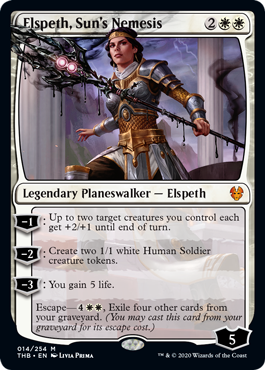
Which brings us to my preview card for today. One of the fun things about returning to worlds is having a chance to make new cards of old characters. My preview card is a popular legendary creature from Theros, one that I'm excited we get to bring back. Even cooler, we found a neat story reason to add the new escape mechanic to the creature. So, without further ado, I'd like to introduce you all to Polukranos, Unchained.
Tap here to see the new card.
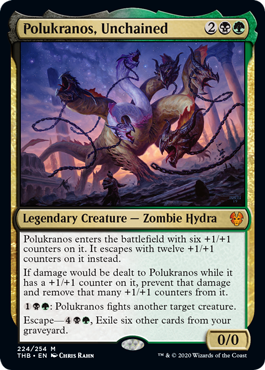
As you can see, Polukranos has sadly died, but as we learned with Elspeth, death's a little less final on Theros. This means that Polukranos gets to add a second color and a second creature type (making him the first Zombie Hydra—well, not counting the counter made by Honored Hydra in Amonkhet). I'm hopeful Polukranos fans will enjoy the latest version.
Until Next Time
That's all the time I have for today. There's obviously a lot of returning mechanics in Theros Beyond Death, and I'll get to those next week. As always, I'm eager to hear any feedback on today's article or on Theros Beyond Death. You can email me or contact me through any of my social media accounts (Twitter, Tumblr, and Instagram).
Join me next week for part two.
Until then, may you manage to escape the underworld many times.
#699: Maria & Meghan
#699: Maria & Meghan
39:15
This is my first podcast of a new series where I talk about various members of the Magic community that produce content. I'm going to start by talking about Maria and Meghan of the "Good Luck, High Five" podcast.
#700: Plane Diversity
#700: Plane Diversity
47:19
In this podcast, I talk about a popular topic from my blog about why Magic worlds aren't all as diverse as Dominaria.
- Episode 698 Reusing Things
- Episode 697 Planeswalker Evolutions
- Episode 696 When to Change

